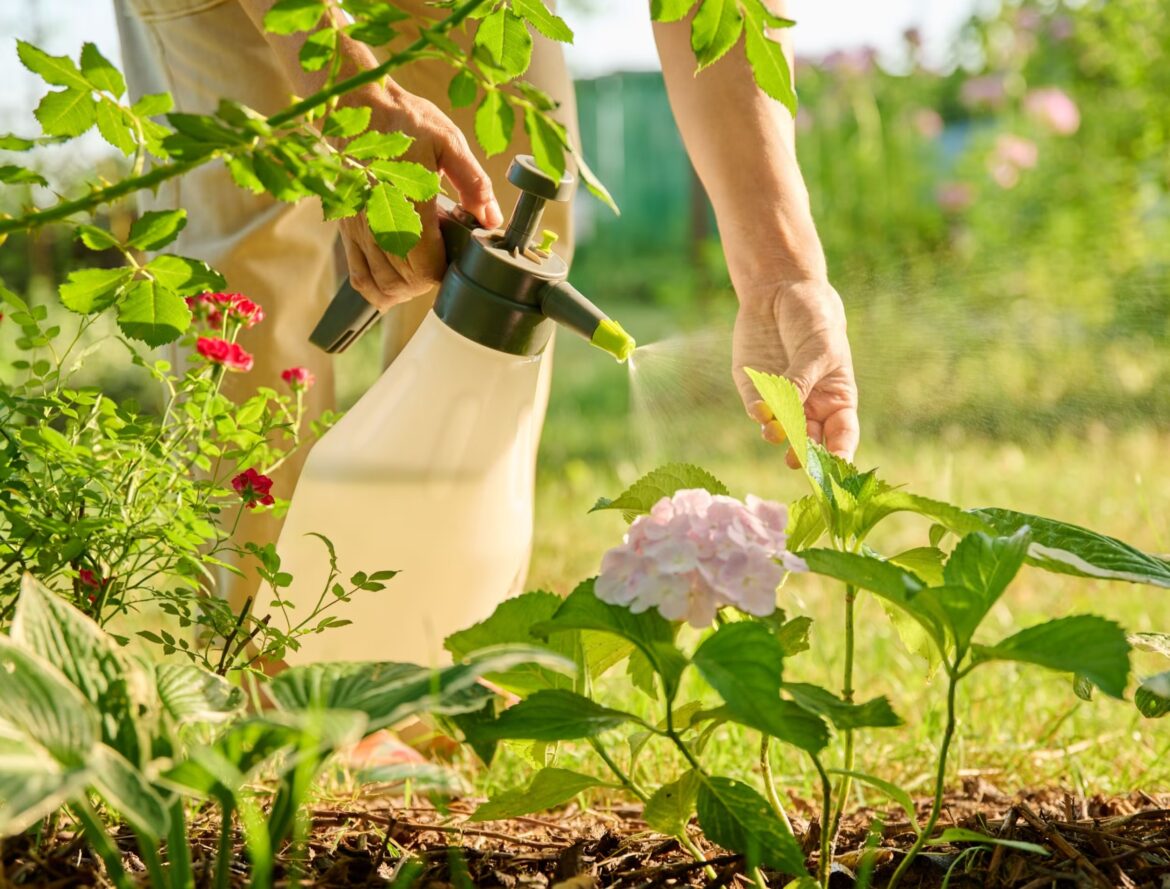If you’ve ever tried to deal with pests while also owning a pet, you already know the tension.
You want the ants, roaches, mosquitoes, fleas, mites and random crawling villains out of your space…
but you also don’t want your dog licking poison off the floor or your cat inhaling something that sends you to emergency vet care.
So you think, “Let me just use natural stuff.”
And boom — that’s where most people go wrong.
Because here’s the uncomfortable truth:
Natural doesn’t automatically mean pet-safe.
And “chemical” doesn’t always mean dangerous.
Many owners confuse those categories and end up using things like essential oils or vinegar sprays the wrong way. Some even unintentionally poison their pets while trying to “go natural.”
So let’s break this down properly. By the end of this guide, you’ll know exactly how to protect your space and your pets without losing your mind.
Why Pets and Pest Control Can Clash So Easily
Before we jump into solutions, it helps to understand why this stuff is tricky in the first place.
Pets:
-
sniff everything
-
lick everything
-
walk through everything
-
eat things they have no business eating
-
react to scents way more than humans
-
have livers that cannot process many “natural” compounds
So even if you spray something mild like peppermint oil, you could unknowingly cause:
-
respiratory irritation
-
skin reactions
-
vomiting
-
neurological issues
-
liver stress
In other words, your pet isn’t a tiny human.
They don’t process “natural” substances like we do.
Once you accept that, you start making smarter decisions.
Rule 1: Not Every Natural Product Is Safe for Pets
Let’s call out the common ones people misuse.
Essential oils: The big misunderstood villain
These get promoted everywhere as “non-toxic,” but many are actually dangerous.
Here are oils that are toxic to dogs and cats:
-
Tea tree
-
Eucalyptus
-
Peppermint
-
Pennyroyal
-
Citrus oils
-
Cinnamon
-
Wintergreen
-
Clove
-
Ylang ylang
-
Pine oil
Most people don’t know this.
You’ll see folks on TikTok spraying peppermint oil for roaches with their pets roaming freely.
That’s an incredibly risky move.
Vinegar: Safe for cleaning, useless for killing pests
Vinegar cleans surfaces well, but it barely kills bugs.
So while it’s safe, it’s not a strong pest control tool.
Useful? Yes.
Powerful? No.
Baking soda: Safe in small cleaning amounts, toxic when eaten
Dogs and cats can get sick if they lick too much baking soda.
So sprinkling it everywhere isn’t a great idea.
Garlic: Great for repelling pests, toxic to pets
Some blogs recommend garlic sprays for gardens.
Fine for plants — very bad for pets.
So instead of copying random “natural hacks,” always double-check whether they’re pet-safe.
Rule 2: Choose Natural Pest Control Methods That Actually Work and Are Pet-Safe
Let’s go through what really works. Not guesswork, not vibes — effective and safe strategies.
1. Use Food-Grade Diatomaceous Earth (DE)
Let’s start with a big one.
You may have seen “DE” online and wondered if it’s hype.
Short answer: it’s legit.
What it is
A fine powder made from fossilized algae.
How it works
It dehydrates insects by damaging their outer shells.
Meaning: no poison, no fumes, no harmful residues.
Great for killing
-
Fleas
-
Ticks
-
Roaches
-
Ants
-
Bedbugs
-
Mites
-
Spiders
Pet safety?
Food-grade DE is safe for pets — as long as you don’t let them inhale big clouds of it.
How to use it properly
-
Sprinkle a thin layer in corners, crevices, under furniture, along baseboards.
-
Do NOT dump it everywhere in huge piles.
-
Keep pets away during application so they don’t breathe it in.
-
Vacuum after a few days and reapply if needed.
This is one of the best pest control tools that stays safe for pets if used correctly.
Read Also: LOW IMPACT EXERCISES TO KEEP AGING PETS ACTIVE
2. Sticky traps and physical barriers
This is the safest approach hands down.
Works for
-
Ants
-
Roaches
-
Spiders
-
Flies
-
Silverfish
How to use
-
Place sticky traps behind appliances, under sinks, behind doors.
-
Use caulk to seal gaps.
-
Install mesh screens.
-
Use weatherstripping to block entry points.
Zero chemicals, zero scent, zero danger.
And honestly, sometimes the simplest methods are underrated.
3. Pet-Safe Insect Growth Regulators (IGRs)
Some people sleep on these, but IGRs are powerful.
What they do
They don’t kill pests.
They stop pests from reproducing.
Meaning: you stop the next generation.
Why they’re great
They’re considered safe around pets because they don’t target the nervous system like pesticides do.
Best for
-
Fleas
-
Roaches
This is a subtle approach, but incredibly effective.
4. Neem Oil: A natural option that actually works
But this one has a catch.
Safe for pets?
Yes — but ONLY if used properly and diluted heavily.
Never apply pure neem oil to pet bedding or places they sleep.
Always dilute and keep the pet away during application until surfaces dry.
Good against
-
Fleas
-
Mites
-
Mosquitoes
-
Ticks
Just don’t use neem oil like perfume spray. You must apply carefully.
5. Citrus Peels and Citrus Spray
Cats dislike citrus naturally, and most insects do too.
Safe for dogs
Mostly yes, when used as a surface spray.
Not safe for cats when ingested
Citrus oils are toxic for cats, but the mild scent from peels is generally harmless.
How to use
-
Boil citrus peels
-
Let the water cool
-
Strain
-
Spray on window frames, doorways, corners
Keeps ants and spiders away gently.
6. Soapy Water Spray
This is one of the safest and cheapest pest control tools ever.
Works amazingly for
-
Ants
-
Aphids
-
Roaches
-
Spiders
How it works
The soap breaks the insect’s outer layer, causing dehydration.
And it dries without leaving harmful residue.
How to use
-
1 cup water
-
A few drops of mild, unscented dish soap
-
Spray directly on pests or trails
This is safe for pets as long as they don’t lick the fresh, wet soap.
Once dry, it’s fine.
7. Borax — Use ONLY with extreme caution
Borax is natural… but dangerous if a pet ingests it.
So here’s the honest breakdown:
Safe only when
-
Sealed inside crevices where pets can’t access
-
Used sparingly
-
Applied where licking is impossible
Great against
-
Ants
-
Roaches
Borax bait traps can be powerful, but you must think like a pet:
“Can they lick this? Step on it? Knock it over?”
If yes, avoid it.
How to Control Common Pests Safely
Let’s go pest by pest so you can apply the right method without stressing your pet out.
Fleas
Fleas are aggressive and fast. Safe methods:
-
Food-grade DE on carpets and bedding
-
Frequent vacuuming
-
Washing pet bedding weekly
-
Flea shampoo made for pets (not homemade hacks)
-
Oral flea meds recommended by your vet
-
Natural flea traps (soap dish with warm light)
Avoid:
Essential oils on the pet.
Garlic.
Homemade sprays claiming to kill fleas instantly.
Most natural flea solutions only work when combined with cleaning.
Ants
Safe methods:
-
Vinegar wipe downs
-
Lemon spray
-
Soapy water spray
-
DE along baseboards
-
Seal entry points
-
Airtight food containers
Avoid:
Borax where pets can reach.
Roaches
Roaches are stubborn, so you need a combo:
-
DE under appliances
-
Sticky traps
-
Regular deep cleaning
-
Soapy water for contact killing
-
Remove clutter
-
Store food properly
Avoid:
Spraying essential oils everywhere.
Mosquitoes
Pet-safe methods:
-
Remove standing water
-
Install window screens
-
Plant mosquito-repelling plants (rosemary, basil, lavender)
-
Use a fan in your pet’s sleeping area
-
Use pet-safe mosquito repellents (NOT human products)
Avoid:
Citronella essential oil near pets
Bug zappers near pet areas
Unregulated homemade repellents
Mites and Ticks
Safe methods:
-
DE in pet resting areas
-
Frequent brushing
-
Wash blankets weekly
-
Use vet-approved tick prevention
-
Keep grass trimmed outside
Avoid:
Dousing your pet in DIY oils.
Flies
Safe methods:
-
Apple cider vinegar fly traps placed out of reach
-
Fly screens
-
Fans
-
Sticky strips placed high up
-
Keep trash sealed
Avoid:
Fly sprays indoors when pets are around.
How to Pet-Proof Your Pest Control Routine
Let’s talk about real-life application, because that’s where people usually slip.
1. Always keep pets away during application
Even safe products can be irritating when wet or airborne.
Give everything time to settle or dry.
2. Never apply essential oils directly to your pet
A surprising number of owners still do this because online “natural pet bloggers” promote it.
Your pet’s liver cannot break down many essential oils.
So applying it to their skin or fur is a fast track to toxicity.
3. Store pest control items out of reach
Pets investigate everything.
Keep powders, sprays, liquids, and concentrates in locked or high places.
4. Clean up crumbs, spills, and food residue
Half of pest control is simply removing the buffet that pests depend on.
5. Don’t confuse “pet-safe” with “pet-proof”
Even natural powders can irritate eyes, noses, and lungs if your pet walks through a fresh application.
Final Thoughts: Natural Pest Control With Pets Is All About Balance
If you came looking for magic answers, here’s the truth:
There is no single perfect natural method.
There is only the combination that keeps pests away while respecting your pet’s biology.
That means:
-
Using DE for long-term control
-
Using soapy water sprays for instant results
-
Using citrus or vinegar for repelling
-
Using sticky traps for monitoring
-
Avoiding risky essential oils
-
Keeping your space clean
-
Being realistic about what “natural” really means
So here’s the real question:
Are you trying to eliminate pests completely, or simply prevent them?
Because the approach you take should match the goal.



